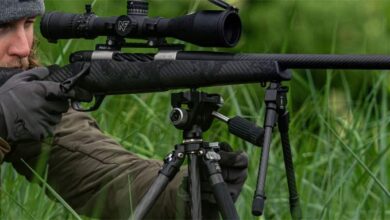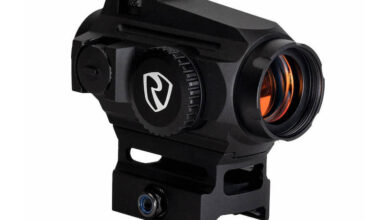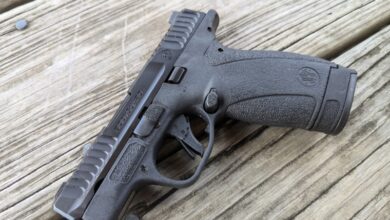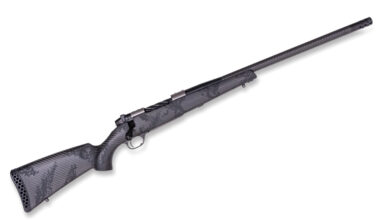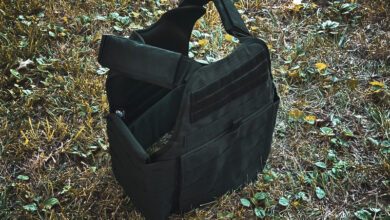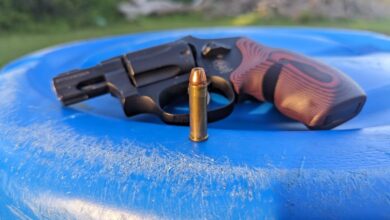Military-Issue Handguns: The Journey of Automatics
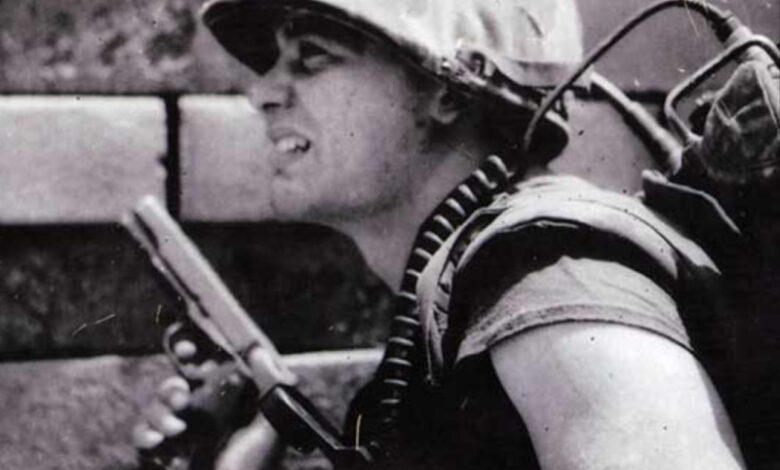
Wikipedia maintains a list of the out-of-service weapons used by the United States military. If you scroll through it, you will see dozens of obsolete military-issue handguns. From the start of our country to the turn of the 20th century, we flew through sidearms. Right around the year 1911, things started to slow down. In 1911, the US Military adopted its first general-issue automatic handgun, and now, over a century later, we’ve only adopted our third general-issue automatic handgun.
Automatic handguns have had some real staying power in the United States military. In the 1800s, the United States military changed handguns 14 times. Those three automatic handguns are the M1911, the Beretta M9, and the Sig Sauer M17/M18. They are an excellent representation of semi-auto handguns throughout the years and show the general evolution of the duty handgun. Today, we will break down each one, discuss their service and overall design, and ponder why they succeeded (or failed).
Automatics In The Military
The US Military is famously conservative in adopting new technology, especially new small arms. The US military wasn’t the first to adopt a semi-auto handgun, but it wasn’t far behind. It was the first to adopt a gun that would eventually become the blueprint for most service pistols. US Service pistols are duty-sized weapons in duty-appropriate calibers that weren’t designed to decorate an officer’s uniform but for fighting. That influence went on to inspire most modern military forces to treat handguns as serious weapons. The gun that started it all was the M1911.
M1911: America’s First Automatic
John Browning spent nearly a decade designing the weapon that would become the M1911. This wasn’t just static research and development, but the road to the M1911 was pockmarked by guns like the Colt M1900, the M1902, the M1903, and so on until we arrived at the M1910, which, when adopted in 1911, became the M1911. This gun introduced the world to short-recoil handgun design, making it the standard for semi-auto firearms.
Short recoil systems offered a low-recoil alternative that was much better than blowback-operated guns. Unlike other locked breech systems, the short recoil system was fairly easy and affordable to produce. For example, the Luger’s toggle lock is great but complicated.
The M1911 used the famed .45 ACP cartridge, which was fed to the gun through a seven-round single-stack magazine. The gun was a single-action-only, hammer-fired design. The Army had its hand in its design, resulting in both a grip safety and manual thumb safety. In 1911, the .45 ACP cartridge offered a big bullet that penetrated deeply and outperformed most European calibers of the time.
A Legacy
The M1911 served the United States until 1985. It saw action in both World Wars, Korea, Vietnam, and all the small conflicts in between. Even after 1985, the M1911 remained in service with special operations units, namely the United States Marine Corps Force Recon elements. According to legend, the M1911 was beloved by soldiers, and if you don’t believe me, get into a conversation with any boomer or Gen X soldier, and you’ll hear all about it.
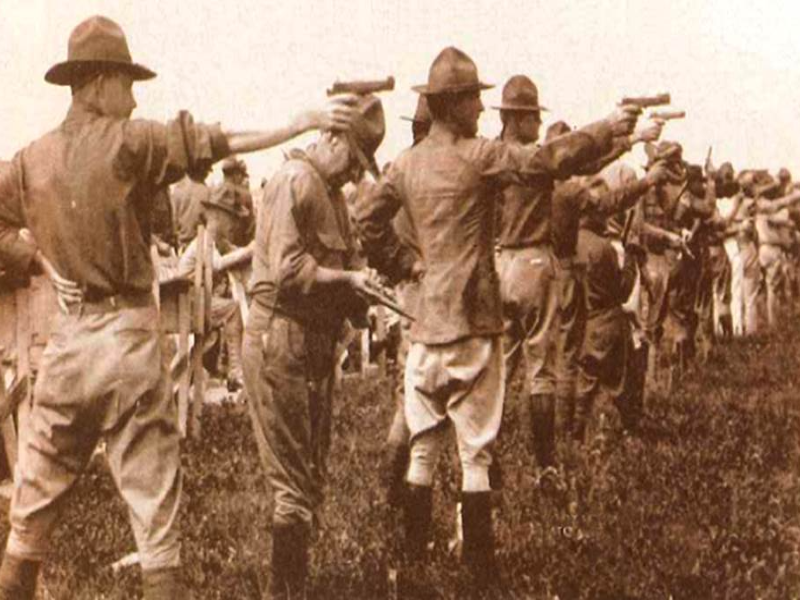
The M1911 was replaced for several reasons. First, the United States wanted to standardize its handgun to NATO standard, which meant 9mm. They also wanted improved capacity, which meant a double-stack magazine. They also desired a DA/SA design, which was becoming the standard in the 1980s. The M1911 wasn’t a bad gun. It was just out of date and had a relatively low capacity.
Beretta M9: The Italian Stallion
Replacing the M1911 was no easy task, but the Beretta 92SB, later the 92SF, would become the gun to do it. Designated the M9, the Beretta offered everything the military wanted. It was DA/SA, held 15 rounds of NATO-approved 9mm, and met the strenuous testing of the XM9 trials. The gun used a short recoil system that was similar but different from the M1911. From a practical standpoint, it was low-recoiling, reliable, and easy to shoot.

The adoption of the Beretta M9 was plagued by controversy. Beretta fought an uphill battle against a handgun that was entrenched in the United States military for more than 70 years. That’s a tough fight, plus this was a time when people believed in stopping power and that a bigger bullet was always a better bullet. Add in the fact the Beretta M9 had issues with the slide flying rearward when the frame cracked. This was caused by certain military forces firing 9mm from the gun while very hot.
These teething issues were quickly fixed, but then the gun was hit with reliability issues. It turned out that the military went with Beretta, but they didn’t want Beretta magazines. They went with a lower bidder who provided craptastic magazines that were sensitive to sand. The military wisely began to issue more appropriate magazines and got rid of the cheaper options. While these problems weren’t the gun’s fault, they did plague the adoption of the M9 and hurt its reputation.
Enter the GWOT
When the Global War On Terror kicked off, the Beretta got its trial by fire, and we saw a gradual shift in the perception of the Beretta. As a machine gunner, I carried the M9 as my sidearm to my M240. From day one, I was told it was a crappy sidearm, but my personal experience never confirmed that. I qualified on my first try with nothing more than five minutes of training on the gun. It served me well.
The reputation of the M9 only improved as the wars went into their second decade, and my generation seems to have a nostalgia for the gun. By 2015, the gun was dated. It lacked a lot of modern features that were being seen on handguns. The grip was massive, and the all-metal design was heavy. DA/SA guns were no longer popular, and striker-fired options had been the standard for a decade by then. The military wanted a more modern and modular option and launched the Modular Handgun System Competition.
Sig Sauer M17/M18: The Current Service Pistol
After two years of testing and the controversial spending of millions of dollars, the United States settled on the Sig Sauer P320, designated the M17 or M18, depending on configuration. I remember being at SHOT Show in 2017 when the P320 was announced as the winner. The folks at Sig Sauer were flooded with intrepid writers and content creators, all trying to get a quote. The M17/M18 represented a massive change to service handguns.
The P320 was a 9mm, double-stack, striker-fired handgun with a lightweight polymer frame. The striker-fired design is more akin to the single-action trigger of the M1911 rather than the DA/SA design of the Beretta. Striker-fired triggers have one consistent trigger pull for every shot fired. These guns utilize either 17 or 21-round magazines.
The weapon came ready for both lights and optics. The military’s goal was for modularity, and it doesn’t get much more modular than the P320. The gun uses an internal fire control unit that can be removed and swapped from frame to frame. The M17 offers a full-sized gun with a 4.7-inch long barrel, and the M18 has a 3.9-inch barrel for a more compact option. There has even been some experimentation with systems like the Flux Defense Raider using the M17 as its core firearm.
The P320 was controversial because of its drop-safety. The military seemed to have identified this issue early, and Sig Sauer fixed it. Unlike standard P320s, these guns also feature manual safeties, which Big Military will never get away from. The M17 and M18 series of handguns are currently serving every branch. Most branches seemed to have adopted the smaller M18.
Today’s Market
The M17 and M18 series pistols are pretty modern and reflect the current handgun market. While the general issue of weapon lights and optics isn’t universal, the M17/M18 series is primed to adopt these tools should the military decide to go that route.
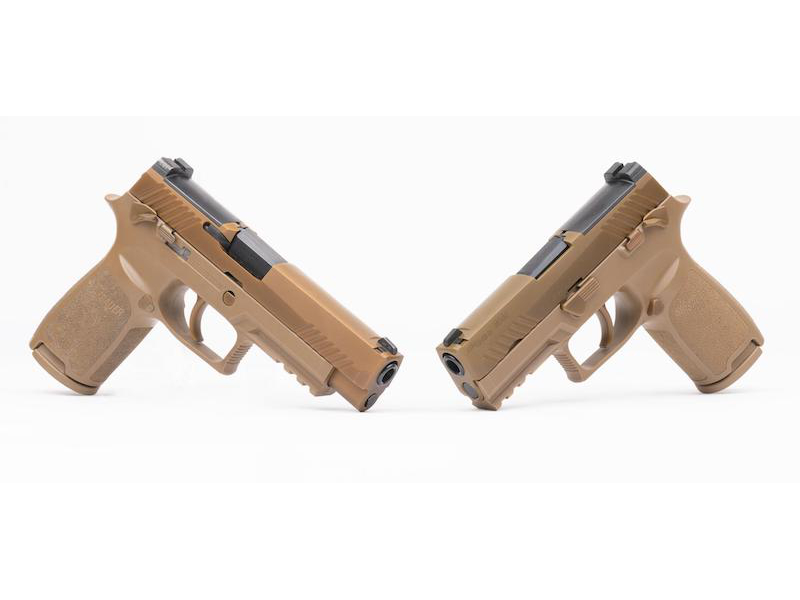
The gun has only been in service for seven years now, and it will take quite some time for the P320 series to replace the Berettas currently in service. The initial focus seemed to be on combat arms within the military. Units like the 101st Airborne and the USMC’s Force Recon have been seen fielding these weapons. Time will tell if the Sig can live up to the famous Colt and Beretta entries.
The World of Military Sidearms
When you look at the years these guns were adopted and compare them with the handgun market of the era, we can see a clear delineation in handgun technology. From the single-action M1911, the DA/SA M9, and now the striker-fired P320, it’s clear that the US military has been progressive in its handgun choice. The only thing that’s remained consistent is the military’s obsession with a manual safety.
Let’s fast forward a decade or so. What will the next military sidearm look like? What kind of advancements will we see in firearms in the next few years? Only time will tell, but let me see some predictions below.
The post Military-Issue Handguns: The Journey of Automatics appeared first on The Mag Life.
Read the full article here

